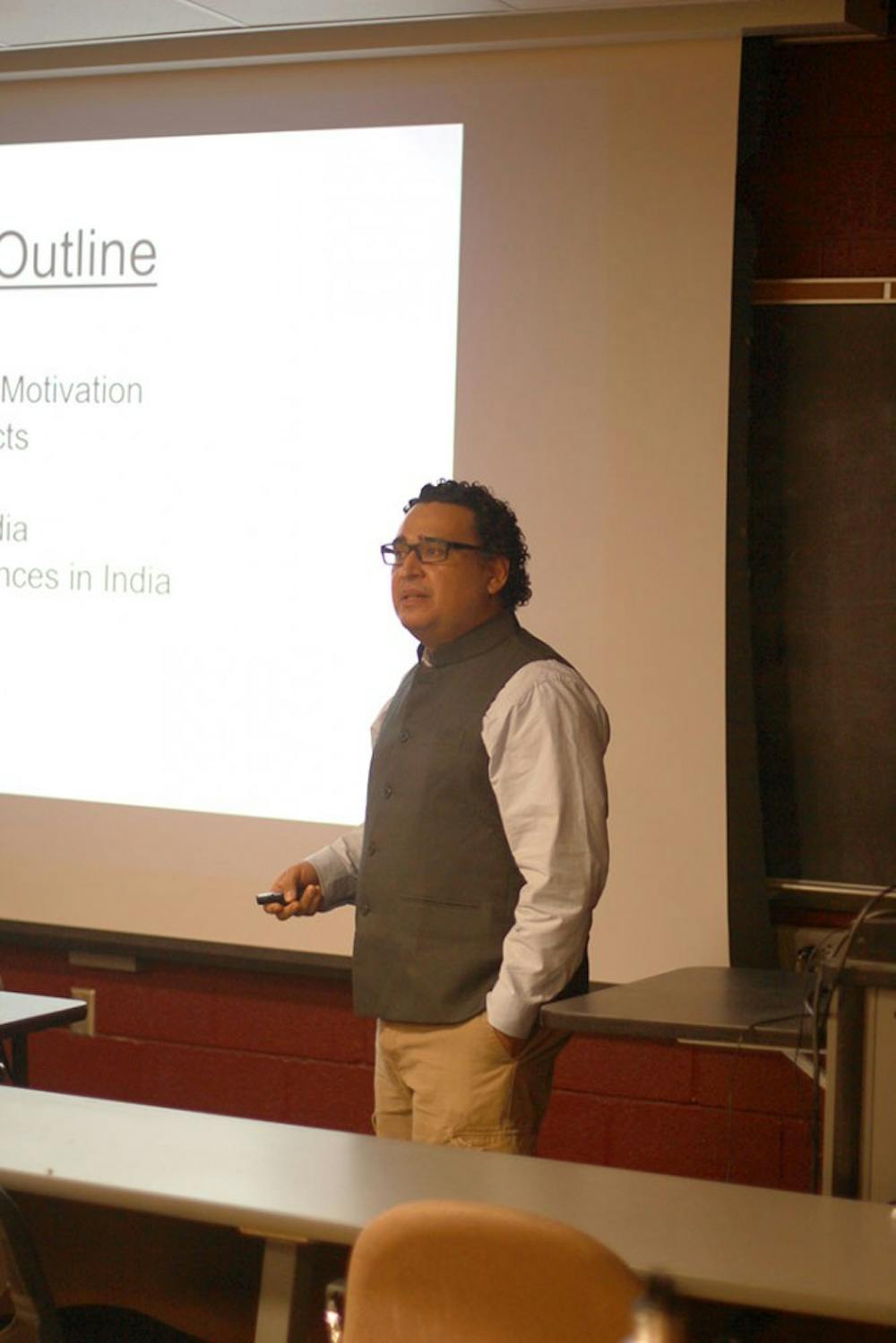From thieving monkeys to Indian stereotypes, students learned a lot from Luis Melara’s talk about his escapades in India on Thursday at the Dauphin Humanities Center at Shippensburg University.
Associate professor of mathematics Luis Melara spent his Thursday night teaching students.
In stark contrast to his usual rigorous lectures, the evening was about sharing his passion with a hall full of people who had chosen to be there.
The stereotype of the “drab math teacher” did not fit Melara, whose unique perspective on life in a disparate culture incited smiles and laughter in his volunteer audience.
Jonathan Skaff, professor of history and current director of international studies, gave Melara an enthusiastic introduction as he took the stage. Skaff, eagerly seated in the front row, had teamed up with Melara to bring the event to their respective liberal arts and STEM student bases, which appeared to evenly split the near-capacity audience.
During the spring 2016 semester, Melara could be found instructing linear algebra to freshmen engineering students at the prestigious Bhubaneswar campus of the Indian Institutes of Technology (ITT) through the Fulbright-Nehru Fellowship, named after India’s first prime minister. He noted that with an acceptance rate of about 0.5 percent, it is more than 12 times more difficult to get into than Harvard. One notable product of the IIT system is the current chief executive officer of Google, Sundar Pichai.
Melara was particularly interested in the Indian Fulbright program, which was jointly funded by the United States and host nation governments, because many of his colleagues in mathematics and related fields were from India.
“I was curious about why they have such a strong math background,” Melara said. He wanted to bring back a new perspective for his own students here in the U.S.
Not only has Melara internalized a new view for teaching his own courses, he shares many of the lessons he learned in speeches like those from Thursday night. The presentation was less technical in nature than his traditional class and dealt primarily with amusing anecdotes of the culture differences, some of which proved to be a barrier in the classroom.
Despite the fact that higher education in India is in English, Melara recounted two specific instances where he thought he and his students had found two different solutions to a math problem when they were actually saying the same thing in different words and gestures.
“Where we would say ‘one-half,’ they said ‘one by two,’” Melara said.
He also shared how different some things could be while others almost mirrored life in the U.S. For example, although India may still be under the influence of its caste system, which divides society into hereditarily-based classes, he shared that only 15 of his 160 students were female — a number that is eerily similar to female underrepresentation in engineering disciplines in the U.S. and nearly identical to the percentage of female engineering students in the United Kingdom only a decade ago.
Still, there were some differences that had no U.S. analog. He said that locals often confused him for Indian because of his appearance.
“They would assume I was [my wife’s] driver,” he laughed.
From cows freely taking naps on highways to monkeys in the streets stealing sunglasses, there was a constant stream of exciting entertainment when he was not on the job.


The Slate welcomes thoughtful discussion on all of our stories, but please keep comments civil and on-topic. Read our full guidelines here.